Make Money Writing Blogs with WordPress
When I launched my first WordPress blog back in 2015, I was uncertain if it could become a viable source of income. Today, I can confidently share that with the right strategies, it’s possible to generate significant revenue.
Many aspiring bloggers wonder if they can monetize their blog effectively. The answer lies in diversifying your revenue streams and choosing the right monetization methods. By exploring various strategies, you can turn your WordPress blog into a sustainable online business. For more insights, you can visit this resource on making money blogging.
Key Takeaways
- Diversify your revenue streams for sustainable blogging success.
- Explore 17 different monetization methods for WordPress blogs.
- Understand the importance of consistency in blogging.
- Learn how to balance monetization with content quality.
- Discover the potential returns on investment for different monetization strategies.
Why WordPress is the Perfect Platform for Monetizing Your Blog
The quest for the perfect blogging platform ends with WordPress, offering unparalleled flexibility and monetization opportunities. With over 43% of all websites online powered by WordPress, it’s clear that this platform is a favorite among bloggers and businesses alike. Its widespread adoption is a testament to its capability to support a wide range of websites, from simple blogs to complex e-commerce sites.
One of the key reasons WordPress stands out is its flexibility. Whether you’re a beginner or an experienced blogger, WordPress provides the tools and features necessary to create a professional-looking blog that can be monetized effectively. The platform’s extensive library of themes and plugins allows you to customize your blog to suit your needs and brand identity.
WordPress.org vs WordPress.com: Which is Better for Making Money?
When considering WordPress for your blog, it’s essential to understand the difference between WordPress.org and WordPress.com. WordPress.org is a self-hosted platform that gives you complete control over your site, including its monetization. On the other hand, WordPress.com has limitations on monetization unless you upgrade to their higher-tier plans.
- WordPress.org offers more flexibility and control, making it ideal for bloggers who want to maximize their monetization options.
- With WordPress.org, you can install any plugin or theme you like, giving you the freedom to customize your site as you see fit.
- WordPress.com, while more user-friendly, restricts certain monetization methods unless you pay for an upgraded plan.
For those serious about making money from their blog, WordPress.org is the better choice due to its flexibility and lack of restrictions on monetization.
Essential WordPress Setup for a Money-Making Blog
Setting up your WordPress blog correctly is crucial for its success. Here are some essential elements to consider:
- Reliable Hosting: Choose a reputable hosting provider that offers good performance and customer support.
- Responsive Themes: Select a theme that is mobile-responsive to cater to the majority of internet users who access websites via mobile devices.
- SEO Plugins: Utilize SEO plugins like Yoast SEO to optimize your content for search engines, thereby increasing your blog’s visibility.
- Security Plugins: Protect your blog from malware and other security threats by installing a security plugin.
By focusing on these essential setup elements, you can create a solid foundation for your blog that supports your monetization efforts.
As you continue to grow your blog, it’s also important to consider the role of analytics in tracking your progress and optimizing your content for better results. WordPress offers various analytics tools and plugins that can help you understand your audience and refine your monetization strategy.
Building a Strong Foundation Before Monetization
Establishing a solid foundation is crucial before diving into monetization strategies for your WordPress blog. A well-planned foundation not only enhances your blog’s visibility but also increases its potential for generating sustainable income. In this section, we’ll explore the key elements that contribute to a successful WordPress blog.
Choosing a Profitable Niche for Your WordPress Blog
Selecting a profitable niche is the first step towards creating a successful WordPress blog. While it’s possible to have a broad website that caters to multiple niches, focusing on a specific area of expertise gives you a competitive edge. By concentrating on a niche that you’re knowledgeable about, you’ll be competing against a narrower range of websites, thereby increasing your chances of standing out. To identify a profitable niche, consider the following factors:
- Research market demand using tools like Google Trends and Keyword Planner.
- Analyze competition to understand the landscape and identify gaps.
- Evaluate commercial intent by looking at the presence of affiliate marketing, sponsored content, and product sales in your chosen niche.
| Niche | Market Demand | Competition Level | Commercial Intent |
|---|---|---|---|
| Health and Wellness | High | High | Strong |
| Personal Finance | Medium | Medium | Medium |
| Niche Hobbies | Low | Low | Weak |
Creating Quality Content That Attracts Readers
Once you’ve chosen a profitable niche, the next step is to create high-quality, engaging content that attracts and retains readers. Your content should provide value to your audience, be well-researched, and presented in an engaging manner. To achieve this, focus on:
- Crafting compelling headlines that capture attention.
- Using a conversational tone that resonates with your audience.
- Incorporating visuals like images and videos to enhance the reader experience.

Growing Your Traffic: SEO Basics for WordPress
To monetize your WordPress blog effectively, you need to drive targeted traffic to your site. This is where Search Engine Optimization (SEO) comes into play. By optimizing your blog posts for search engines, you can increase your visibility, drive more traffic, and ultimately boost your revenue. Key SEO strategies include:
- Conducting keyword research to identify relevant terms.
- Optimizing on-page elements like meta titles, descriptions, and headings.
- Building high-quality backlinks from authoritative sites.
By focusing on these foundational elements, you’ll be well on your way to creating a WordPress blog that not only attracts readers but also generates sustainable income.
Affiliate Marketing: The Blogger’s Revenue Powerhouse
Affiliate marketing has emerged as a powerful tool for bloggers looking to turn their passion into a profitable venture. By promoting products or services from other companies and earning a commission on sales or referrals made through their unique affiliate links, bloggers can create a significant revenue stream.

How to Choose the Right Affiliate Programs for Your Blog
Selecting the right affiliate programs is crucial for success in affiliate marketing. When choosing an affiliate program, consider the relevance of the products to your blog’s niche and audience interests. Look for programs that offer competitive commission rates, reasonable cookie durations, and a good reputation.
Researching affiliate programs can be done by reviewing their terms and conditions, understanding their tracking and payment systems, and reading reviews from other affiliates. Popular affiliate programs like Amazon Associates, ShareASale, and Commission Junction offer a wide range of products and services that can be promoted.
Amazon Associates: Setting Up Your First Affiliate Store
Amazon Associates is one of the largest and most reputable affiliate programs, with millions of products available for promotion. To set up an Amazon Associates account, start by registering on the Amazon Associates website, then follow the step-by-step guide to create your affiliate store.
Using specialized WordPress plugins can simplify the process of integrating Amazon products into your blog, making it easier to manage your affiliate links and track your earnings.
Best Practices for Integrating Affiliate Links in Your Content
Integrating affiliate links naturally into your content is key to maintaining reader trust and maximizing your earnings. This can be achieved by creating high-quality, product-focused content such as reviews, comparisons, and resource pages.
It’s also essential to comply with FTC guidelines by clearly disclosing your use of affiliate links to your readers. This transparency not only builds trust but also helps avoid legal issues.
To further optimize your affiliate marketing strategy, consider creating product demonstration videos, leveraging seasonal promotion strategies, and integrating email marketing. Tracking and analyzing your affiliate marketing performance using WordPress tools and affiliate dashboard metrics will help you refine your approach over time.
As your blog grows, you may also have the opportunity to negotiate better commission rates with affiliate programs, further increasing your potential earnings.
Display Advertising: Monetize Your Blog Traffic
Display advertising remains one of the most straightforward methods for generating passive income from your WordPress blog. With millions of blogs on the internet, understanding how to effectively monetize your traffic can significantly impact your overall revenue.
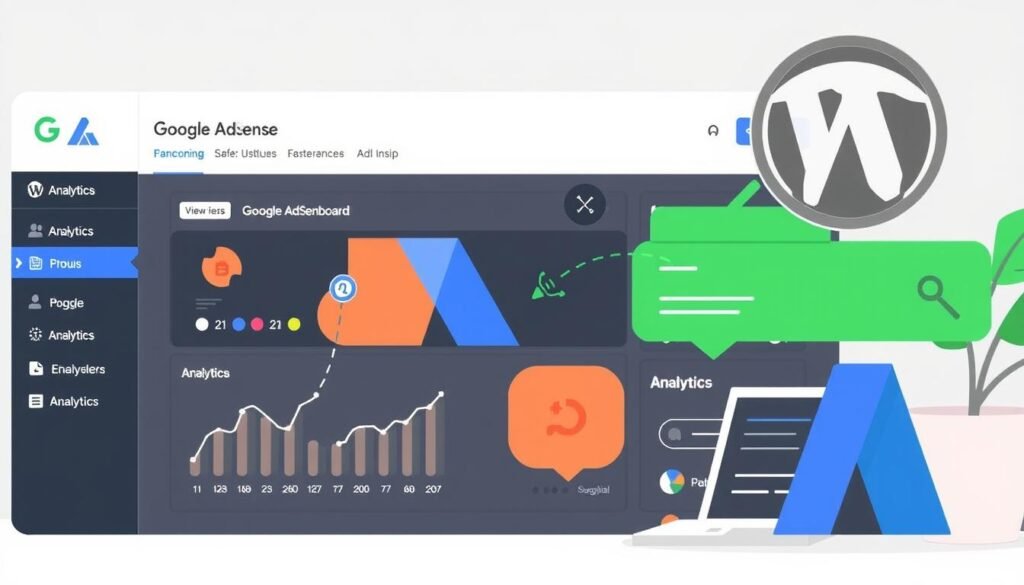
Getting Started with Google AdSense on WordPress
Google AdSense is the most popular ad network for WordPress bloggers due to its ease of use and competitive payout rates. To get started, you’ll need to apply for an AdSense account and meet the eligibility requirements, which include having a functional website with substantial content.
Once approved, you’ll need to implement the AdSense code on your WordPress site. This can be done manually by adding the code to your theme’s header or footer, or by using a plugin designed to simplify the process.
Alternative Ad Networks for WordPress Bloggers
While Google AdSense is a popular choice, other ad networks like Mediavine, Ezoic, and AdThrive offer competitive rates and may have lower traffic requirements. It’s essential to research and compare these networks to find the best fit for your blog’s niche and audience.
Some ad networks specialize in specific types of content or offer better support for certain types of blogs, so it’s worth exploring your options to maximize your ad revenue.
Optimizing Ad Placement for Maximum Revenue
Strategic ad placement is crucial for maximizing revenue without compromising user experience. Techniques such as heat map analysis and engagement metrics can help identify the most effective ad locations on your site.
By optimizing your content structure to naturally accommodate ads, you can maintain readability and user engagement while increasing your ad revenue. Using WordPress plugins designed to manage ad placements can also streamline the process.
To further optimize your ad performance, consider A/B testing different ad formats, sizes, and placements to identify the highest-performing combinations. This data-driven approach will help you refine your ad strategy over time.
Creating and Selling Digital Products
Digital products offer a high-margin opportunity for WordPress bloggers to diversify their revenue streams. By creating and selling your own digital products, you gain complete control over pricing and content, potentially leading to higher profit margins compared to affiliate marketing or advertising.
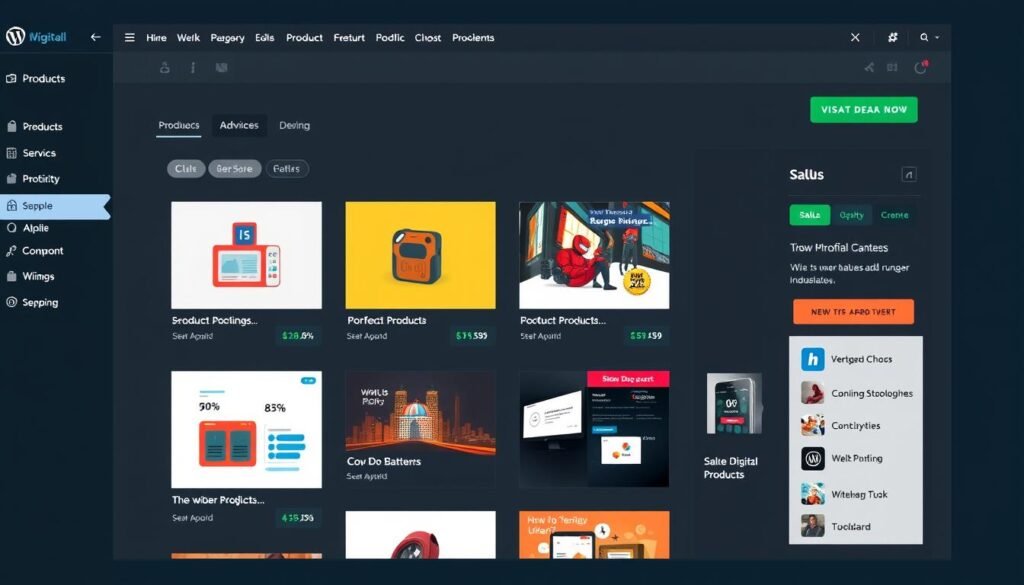
Profitable Ebook Creation and Marketing Strategies
Ebooks are well-suited for blogs as they require less time and effort to produce than other forms of content, are typically affordable, and can even be created from old blog content. To develop profitable ebooks, you can repurpose your existing content, add exclusive material, and package it professionally for maximum perceived value.
For instance, you can transform a series of related blog posts into a comprehensive ebook. This not only provides value to your readers but also helps in establishing your authority in the niche. You can check out some beginner-friendly side hustle ideas to get inspiration for your ebook content.
Developing and Selling Online Courses Through Your Blog
Online courses are another lucrative digital product that can be sold through your WordPress blog. With the help of Learning Management System (LMS) plugins like MemberPress, you can easily set up and sell online courses. MemberPress is particularly useful as it’s both a membership plugin and an online course builder, allowing you to create and sell courses with ease.
When creating online courses, focus on solving specific problems for your audience. Plan and structure your course content carefully, and consider recording and production quality to ensure a professional finish.
Tools and Plugins for Selling Digital Products on WordPress
To effectively sell digital products on WordPress, you’ll need the right tools and plugins. Some of the most effective plugins include Easy Digital Downloads, WooCommerce, and LearnDash. Each of these plugins has its pros and cons, so it’s essential to choose the one that best fits your needs.
For example, Easy Digital Downloads is ideal for selling digital products directly, while WooCommerce offers a more comprehensive e-commerce solution. LearnDash, on the other hand, is focused on creating and selling online courses.
Membership Sites and Premium Content
Membership sites offer a recurring revenue stream, making them an attractive option for bloggers seeking financial stability. By providing gated content and community access, bloggers can create a loyal following and generate consistent income.
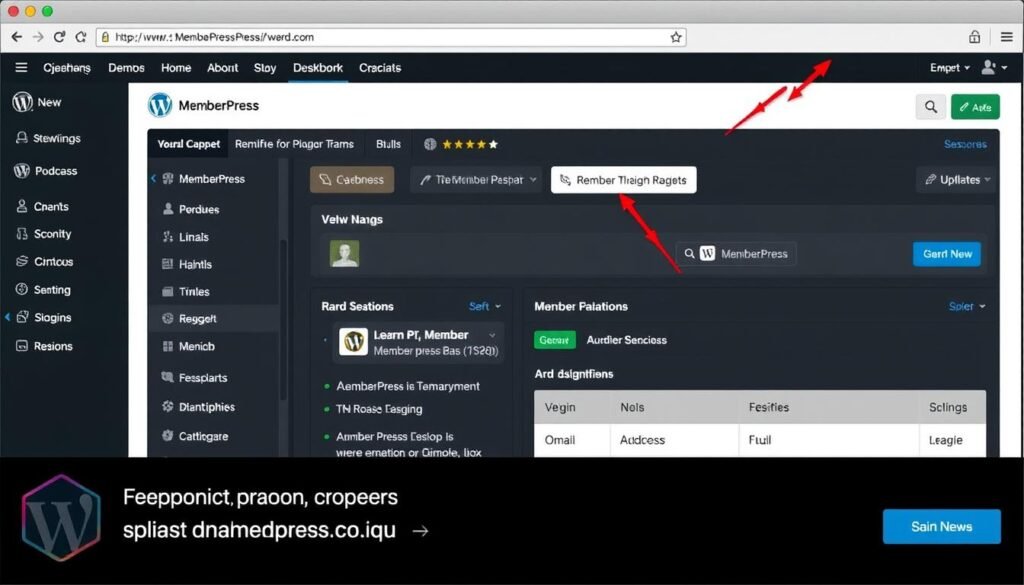
Setting Up a Membership Site with WordPress
To set up a membership site, you’ll need to choose a suitable WordPress membership plugin. Popular options include MemberPress, Restrict Content Pro, and WooCommerce Memberships. These plugins allow you to restrict content, create membership levels, and manage subscriptions.
For instance, MemberPress offers a user-friendly interface and integrates well with popular payment gateways. To set it up, simply install and activate the plugin, then configure the membership settings according to your needs.
Creating Valuable Content Worth Paying For
The success of a membership site hinges on the value of the content offered. To justify subscription fees, focus on creating exclusive tutorials, in-depth guides, and high-quality resources that are not available elsewhere. Additionally, consider offering community access, personalized support, or expert Q&A sessions to enhance the membership experience.
By providing valuable content and engaging with your audience, you can build trust and increase member retention. This, in turn, will help you maintain a stable revenue stream and grow your blog’s income over time.
Pricing Strategies for Membership Sites
When it comes to pricing your membership site, consider implementing tiered access levels to cater to different audience segments. You can also offer annual discounts, founding member specials, or limited-time promotions to incentivize sign-ups.
It’s essential to analyze your audience’s willingness to pay and adjust your pricing strategy accordingly. By monitoring membership metrics, such as retention rates and engagement levels, you can refine your offering and optimize revenue.
Sponsored Content and Brand Partnerships
Sponsored content and brand partnerships can be a lucrative way to monetize your WordPress blog once you’ve built a loyal audience. As your blog grows in influence, brands become more interested in reaching your readers through sponsored content. This form of monetization involves collaborating with brands to create content that promotes their products or services.

To successfully leverage sponsored content, you need to understand how to attract sponsors to your WordPress blog. Creating a compelling media kit is crucial, as it showcases your blog’s audience demographics, traffic statistics, and previous successful collaborations. Highlighting your niche authority and engagement metrics can make your blog more attractive to potential sponsors.
How to Attract Sponsors to Your WordPress Blog
Attracting sponsors requires a strategic approach. Here are some key strategies to consider:
- Develop a comprehensive media kit that includes your blog’s traffic numbers, audience demographics, and engagement metrics.
- Showcase previous successful collaborations or sponsored content examples.
- Clearly outline your niche and areas of expertise.
- Provide multiple contact options for potential sponsors.
For more information on monetizing your blog, you can visit this resource to explore additional strategies.
Setting Your Rates for Sponsored Posts
Determining the right rate for sponsored content is critical. Factors to consider include your blog’s traffic, engagement metrics, niche authority, and the scope of deliverables requested by the sponsor. Researching industry standards and understanding the value you bring to the sponsor can help you set competitive rates.
Some key considerations when setting your rates include:
- The type of content required (e.g., blog post, social media promotion, video).
- The level of exclusivity demanded by the sponsor.
- The duration of the sponsored content campaign.
Maintaining Authenticity While Working with Brands
While sponsored content can be lucrative, maintaining your blog’s authenticity is paramount. This involves being selective about the brands you partner with and ensuring that sponsored content aligns with your blog’s niche and values. Transparency is also crucial; clearly disclosing sponsored content to your readers helps maintain trust.
To maintain authenticity, consider the following:
- Only partner with brands that align with your blog’s niche and values.
- Clearly disclose sponsored content to your readers.
- Maintain editorial control over sponsored content.
By following these guidelines, you can effectively leverage sponsored content and brand partnerships to generate significant revenue from your WordPress blog while maintaining your audience’s trust.
Selling Physical Products Through Your Blog
With the rise of eCommerce, integrating physical product sales into your blog can be a lucrative venture. As your blog grows, you may find opportunities to expand your revenue streams by selling products that resonate with your audience.
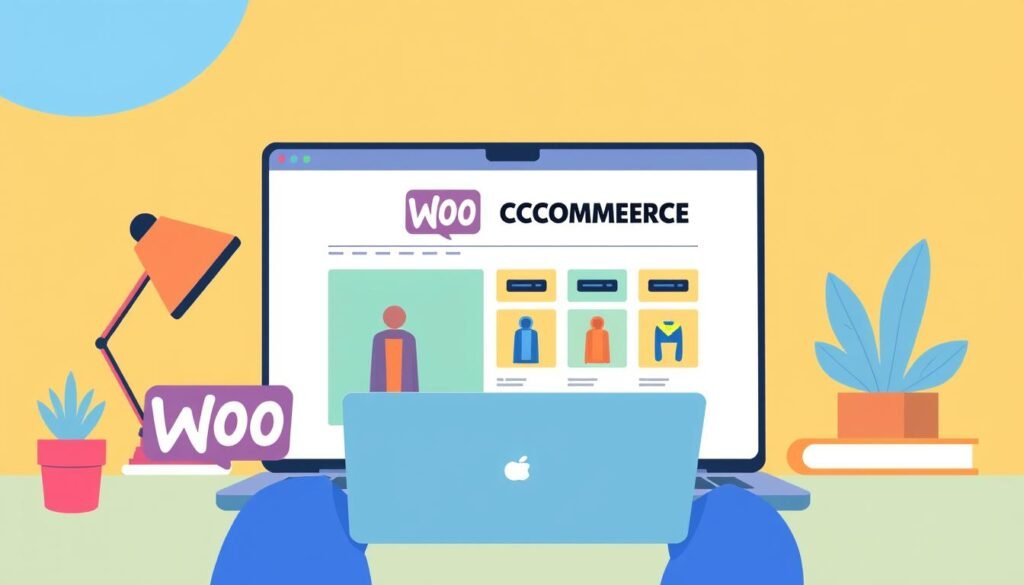
Setting Up WooCommerce on Your WordPress Site
To start selling physical products, you’ll need to set up an eCommerce platform on your WordPress site. WooCommerce is a popular and user-friendly plugin that can transform your blog into a fully functional online store. The setup process involves installing the WooCommerce plugin, configuring basic settings, and integrating payment gateways.
First, install the WooCommerce plugin from the WordPress plugin directory. Once installed, you’ll be guided through a setup wizard that helps you configure essential settings such as store location, currency, and payment methods.
Dropshipping vs. Inventory: Which Model Works Best
When selling physical products, you have to decide between dropshipping and holding inventory. Dropshipping allows you to sell products without holding any stock, as the products are shipped directly from the supplier to the customer. On the other hand, holding inventory gives you more control over product quality and shipping times but requires upfront inventory costs.
Consider your resources, product type, and business goals when choosing between these models. For instance, if you’re just starting out, dropshipping might be a more feasible option to test the market without significant upfront costs.
Marketing Your Products to Your Blog Audience
Effectively marketing your physical products to your blog audience is crucial. You can achieve this by creating compelling product listings, using high-quality product photography, and writing benefit-focused product descriptions.
Integrate your product offerings naturally within your blog content through contextual mentions, product tutorials, and authentic use cases. This approach helps in maintaining the authenticity of your blog while promoting your products.
By leveraging your blog’s audience and using the right marketing strategies, you can successfully sell physical products and create a new revenue stream.
Offering Freelance Services Through Your WordPress Blog
With a WordPress blog, you can effectively showcase and sell your freelance services to a targeted audience. Your blog becomes a dynamic portfolio and a client acquisition tool, allowing you to demonstrate your expertise and attract potential clients.

Showcasing Your Expertise with a Portfolio
A well-crafted portfolio is essential for showcasing your best work and demonstrating the value you can provide to clients. You can use WordPress portfolio plugins to create an impressive showcase of your projects. For instance, plugins like Ultimate Portfolio can help you create a stunning portfolio that highlights your skills.
To create an effective portfolio, focus on including case studies and testimonials that demonstrate your success and the impact of your work. This will help build credibility and trust with potential clients visiting your blog.
Setting Up Service Pages and Contact Forms
Effective service pages are crucial for converting blog readers into paying clients. These pages should clearly communicate your offerings, process, and unique selling propositions. Use clear and concise language to describe your services and include calls-to-action (CTAs) that encourage visitors to contact you.
Setting up professional contact forms is also vital. Plugins like Contact Form 7 can help you create functional and user-friendly forms that streamline your onboarding process.
Pricing and Packaging Your Freelance Services
Pricing your freelance services appropriately is critical to attracting clients and ensuring profitability. Consider different pricing models such as hourly rates, project-based pricing, retainer arrangements, and value-based pricing. Each model has its advantages and can be chosen based on the nature of your services and client preferences.
Packaging your services can also enhance their appeal. Offering bundled services or tiered pricing can provide clients with options and increase your average client value. For more insights on growing a profitable WordPress blog, you can refer to resources like this article on growing a WordPress blog that makes money.
By strategically pricing and packaging your services, you can create ongoing revenue opportunities and build a sustainable freelance business through your WordPress blog.
Make Money Writing Blogs with WordPress: Advanced Strategies
As you establish a solid foundation with your WordPress blog, it’s time to explore advanced strategies to boost your income. With a loyal readership in place, you can now leverage sophisticated monetization techniques to maximize your earnings. In this section, we’ll delve into three key areas that can significantly enhance your blog’s revenue potential: email marketing integration, hosting webinars and workshops, and creating and monetizing a podcast.
Email Marketing Integration for Increased Revenue
Email marketing is a powerful tool for transforming casual readers into paying customers. By integrating email marketing strategies into your blog, you can create a loyal subscriber base that drives revenue. To achieve this, focus on building strategic automation sequences, segmenting your audience, and offering personalized content. For instance, you can create a welcome series that introduces new subscribers to your blog’s premium content, or offer exclusive deals to loyal readers. By doing so, you’ll not only increase your blog’s revenue but also foster a deeper connection with your audience.
To get started with email marketing, consider using popular email marketing platforms that integrate seamlessly with WordPress. These platforms offer a range of features, including automation tools, segmentation options, and analytics. By leveraging these features, you can create targeted campaigns that resonate with your audience and drive conversions. For more ideas on how to boost your income, check out our article on best side hustle ideas for 2025.

Hosting Webinars and Workshops
Webinars and workshops are excellent ways to attract and engage your audience. By hosting live events, you can showcase your expertise, build trust, and create new revenue streams. To host a successful webinar, start by choosing a topic that resonates with your audience. Then, promote your event through your blog, social media, and email list. Consider inviting guest experts to co-host your webinar, as this can help expand your reach and build partnerships. Once you’ve generated enough buzz around your webinars, you can start charging a fee for attendance, creating a new income stream for your blog.
Creating and Monetizing a Podcast
Creating a podcast can be a great way to diversify your content and reach a wider audience. To get started, choose a topic that complements your blog and resonates with your readers. Invest in good quality recording equipment and editing software to ensure your podcast sounds professional. Once you’ve created your podcast, you can monetize it through sponsorships, affiliate marketing, and listener support. To maximize your podcast’s reach, distribute it across multiple platforms, including Apple Podcasts, Spotify, and Google Podcasts. By doing so, you can create a new revenue stream and further establish your authority in your niche.
Accepting Guest Posts and Charging for Submissions
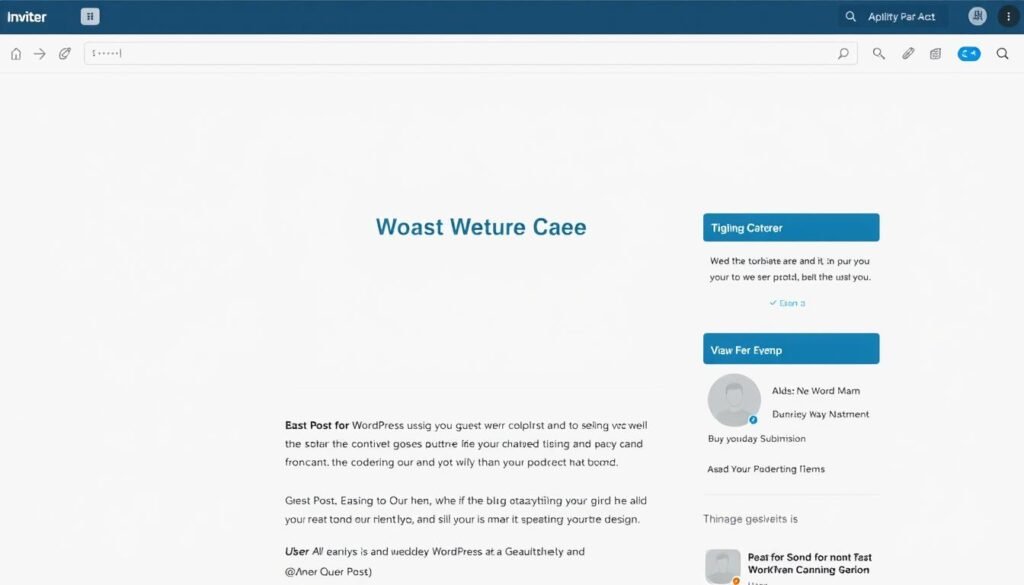
Accepting paid guest posts can transform your blogging experience by reducing content creation workload and generating income. While most bloggers accept guest posts for free to generate user-created content, you can charge for guest blog posts if your site has substantial traffic.
The WPForms Post Submissions addon is a valuable tool that allows you to collect user-submitted content in WordPress without requiring users to log in to your website’s admin area. Using the Rich Text field, you can enable users to write and style their posts directly from your submission form.
Setting Up a Guest Post Submission System
To start accepting guest posts, you need to set up a submission system on your WordPress site. Plugins like WPForms or Gravity Forms can streamline this process. These tools allow you to create a form where contributors can submit their content, making it easier to manage guest posts and submissions.
Clear submission guidelines and editorial standards are crucial for maintaining your blog’s quality. By setting expectations for potential contributors, you ensure that the content you receive is relevant and valuable to your audience.
Determining Fair Pricing for Guest Post Submissions
Pricing guest post submissions requires careful consideration of your site’s authority, traffic, and niche competitiveness. Different pricing models, such as flat rates or tiered pricing based on inclusion features, can be employed. Industry-specific considerations will also impact what you can charge for a post.
To attract quality submissions, it’s essential to promote your guest posting opportunity effectively. This involves reaching out to relevant contributors in your industry and showcasing the benefits of publishing on your blog. By doing so, you can generate significant money while maintaining the integrity of your content.
Balancing monetization with editorial integrity is crucial when publishing sponsored content. Ensuring that your audience trusts the posts you publish is vital for the long-term success of your blog.
Flipping Blogs: Buy, Improve, and Sell WordPress Sites

With the rise of online content, flipping WordPress blogs has emerged as a potentially lucrative business strategy for those who can identify undervalued sites and enhance their value. This concept is similar to house flipping, where an individual buys a property, renovates it, and sells it for a profit. In the context of blogging, it involves purchasing a WordPress blog, improving its content, SEO, and overall performance, and then selling it to interested buyers.
Identifying Undervalued WordPress Blogs
The first step in flipping blogs is to identify undervalued WordPress sites with growth potential. This involves analyzing traffic trends, identifying monetization gaps, and looking for technical issues that can be easily fixed. By doing so, you can pinpoint blogs that are ripe for improvement and have a high potential for resale value.
To identify such blogs, one must be adept at analyzing data and understanding what makes a blog valuable. This includes assessing the niche, the quality of content, the site’s technical SEO, and its current revenue streams. A thorough analysis will help in making an informed decision about the potential of a blog.
Improving Blog Value Through Content and SEO
Once you’ve acquired an undervalued blog, the next step is to enhance its value. This can be achieved through content enhancement, SEO optimization, implementing effective monetization strategies, and making necessary technical improvements. By doing so, you can significantly increase the blog’s traffic, revenue, and overall appeal to potential buyers.
Improving a blog’s SEO involves optimizing its structure, content, and meta tags to rank higher in search engine results. Creating high-quality, engaging content that resonates with the target audience is also crucial. Additionally, implementing effective monetization strategies, such as affiliate marketing or display advertising, can boost the blog’s revenue.
Where to Sell Your WordPress Blog for Maximum Profit
After enhancing your WordPress blog’s value, the next step is to sell it for a maximum profit. Several marketplaces can facilitate this, including Flippa, Empire Flippers, and FE International. Each platform has its requirements and fee structures, so it’s essential to choose the one that best suits your needs.
To maximize profit, it’s crucial to create a compelling sales listing that highlights your blog’s value proposition. This includes showcasing its traffic, revenue, growth potential, and niche competitiveness. By presenting a strong case, you can attract serious buyers willing to pay premium prices.
Accepting Donations and Crowdfunding
Creating a sustainable income stream for your blog can be as simple as asking your readers for support through donations. By implementing a donation system, you can foster a deeper connection with your audience while generating revenue.
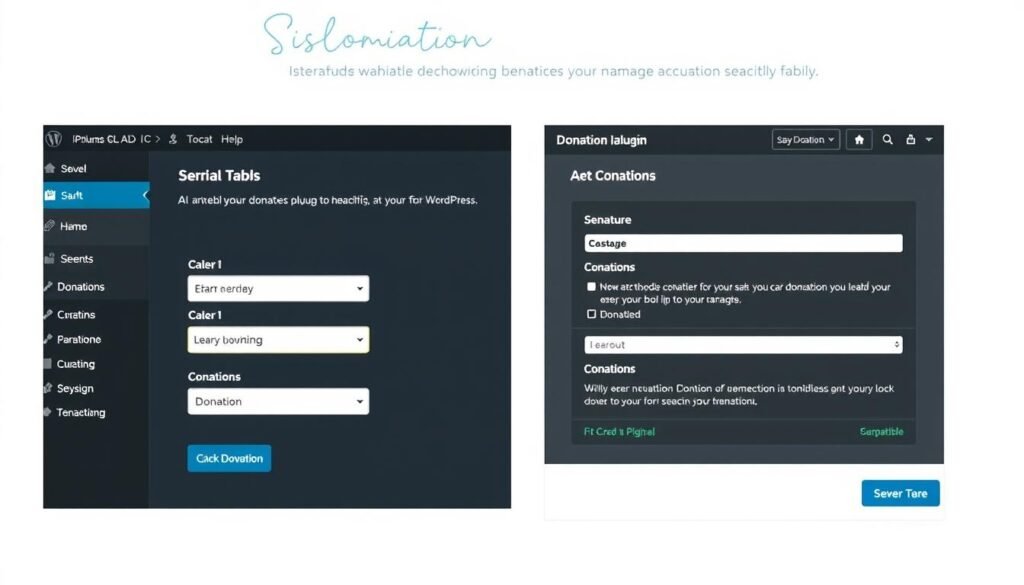
To start accepting donations, you’ll need to set up a donation button or form on your WordPress site. This can be achieved using plugins like PayPal Donations, Give, or WP Simple Pay.
Setting Up Donation Buttons and Forms
Setting up a donation system involves choosing the right plugin for your needs and configuring it to work seamlessly with your site. For instance, PayPal Donations allows you to add a simple donation button to your site, while Give provides more comprehensive features for managing donations, including recurring donations and donor management.
To set up a donation button, start by installing your chosen plugin. For example, with PayPal Donations, you simply need to enter your PayPal email address, choose a button style, and configure any additional settings as desired.
Creating Compelling Reasons for Readers to Support You
To encourage donations, it’s crucial to provide compelling reasons for your readers to support your work. This can involve being transparent about how donations will be used, setting specific funding goals, and offering exclusive content or acknowledgments to donors.
Transparency is key; clearly communicate how the donations will help you continue creating valuable content for your readers. You can also create tiered support levels that offer increasing benefits to donors, making it more appealing for them to contribute.
By leveraging donations and crowdfunding, you can not only generate income but also build a stronger, more engaged community around your blog. This approach allows you to maintain the integrity of your content while reducing reliance on more intrusive monetization methods.
WordPress Development Services: For the Technically Inclined
With WordPress development skills, you can create a lucrative income stream beyond content creation. As a technically inclined blogger, you have the potential to offer a range of services that cater to the needs of various clients.
One of the primary ways to monetize your WordPress expertise is by offering setup and customization services. This can include configuring a basic site, performing complex customizations, and migrating websites. To effectively offer these services, you need to understand how different plugins work and how to transfer functionality between websites.
Offering WordPress Setup and Customization Services
To offer WordPress setup and customization services, you should be proficient in managing multiple websites and configuring them according to client needs. Your services can range from basic site configuration to complex customizations, including migrations. Understanding how to use various plugins is crucial, as they can significantly enhance the functionality of a WordPress site.
Pricing your services appropriately is key to attracting clients. You can package your services based on complexity, value delivered, and market rates. Demonstrating your technical expertise through case studies, code samples, and the functionality of your own blog can also help attract potential clients.
| Service | Description | Price Range |
|---|---|---|
| Basic Site Configuration | Setting up a basic WordPress site with essential plugins and themes. | $100-$300 |
| Complex Customizations | Advanced customizations including custom plugin development and theme customization. | $500-$1,500 |
| Website Migration | Migrating a WordPress site from one host to another or from a different platform to WordPress. | $200-$1,000 |
Creating and Selling WordPress Themes and Plugins
Another lucrative opportunity is creating and selling WordPress themes and plugins. To succeed in this area, you need to understand the design considerations, coding standards, and distribution platforms like ThemeForest. Developing specialized plugins that solve specific problems within your niche or for the broader WordPress community can be particularly profitable.
When creating themes and plugins, it’s essential to follow best practices and ensure that your products are compatible with the latest WordPress versions. Marketing your products effectively through strategic content and showcasing their value can help you reach potential customers.

By leveraging your WordPress development skills, you can create a significant income stream. Whether through offering services or creating and selling products, the key is to identify your strengths and cater to the needs of the WordPress community.
Common Challenges and How to Overcome Them
The road to a profitable WordPress blog is often paved with unexpected challenges, but with the right strategies, you can navigate these obstacles successfully. As a seasoned blogger, I’ve encountered my fair share of hurdles, from inconsistent income to managing time effectively. In this section, we’ll explore the most common challenges faced by WordPress bloggers and discuss practical solutions to overcome them.
Dealing with Inconsistent Income
One of the most significant challenges bloggers face is the unpredictability of their income. To mitigate this, it’s essential to diversify your revenue streams. This can include a mix of affiliate marketing, display advertising, selling digital products, and sponsored content. By not relying on a single source of income, you can better weather financial fluctuations.
Building an emergency fund is another crucial strategy. This fund will act as a buffer during periods of low income, allowing you to continue operating your blog without significant financial stress. Additionally, developing predictable income forecasting methods can help you anticipate and prepare for lean periods.
| Revenue Stream | Average Monthly Income | Stability |
|---|---|---|
| Affiliate Marketing | $500 | Medium |
| Display Advertising | $300 | Low |
| Digital Products | $800 | High |
Managing Your Time Effectively
Effective time management is critical for bloggers who juggle content creation, monetization efforts, technical maintenance, and possibly a day job. To manage your time efficiently, prioritize tasks based on their impact on your blog’s growth and income. Use tools like calendars and project management software to stay organized.
It’s also important to set realistic goals and break them down into manageable tasks. This will help you stay focused and avoid burnout. By allocating specific times for blogging activities, you can maintain a healthy work-life balance.
Staying Motivated During Slow Growth Periods
Slow growth periods can be demotivating, but they’re a normal part of the blogging journey. To stay motivated, focus on your long-term goals and celebrate small victories along the way. Engage with your audience and build a community around your blog to create a sense of fulfillment.
It’s also helpful to continuously educate yourself on new strategies and trends in blogging and monetization. This not only keeps your content fresh but also provides you with the motivation to try new approaches.
By understanding the common challenges and implementing these strategies, you can overcome the obstacles that stand between you and a successful, profitable WordPress blog.
Conclusion: Creating Your WordPress Blog Monetization Strategy
With the numerous strategies outlined in this article, you’re now equipped to transform your WordPress blog into a profitable venture. As we explored, there are 17 powerful methods to generate income through your WordPress site, each with its unique benefits and challenges.
To create a successful monetization strategy, start by evaluating your blog’s specific circumstances, including your content style, technical abilities, and available time commitment. This self-assessment will help you identify the most suitable monetization methods for your blog. For instance, if you have a strong audience engagement, affiliate marketing or sponsored content might be effective options.
It’s essential to develop a progressive monetization roadmap that evolves as your blog grows. Begin with simpler strategies and gradually move to more complex ones. This approach will allow you to test different methods, analyze their performance, and adjust your strategy accordingly. Remember to maintain authenticity in your monetization approach, ensuring that it aligns with your blog’s core purpose and values.
To maximize your income, consider creating synergies between different monetization methods. For example, you can use email marketing to promote your digital products or affiliate links. By diversifying your income streams, you can reduce dependence on a single method and increase your overall revenue.
When evaluating the success of your monetization efforts, track metrics beyond just revenue, such as sustainability and lifestyle impact. This will help you create a more balanced and fulfilling blogging experience. Stay up-to-date with the latest trends and opportunities in the ever-evolving digital landscape by continuously educating yourself on emerging monetization strategies.
Building significant income through WordPress blogging requires persistence and adaptation. Be prepared to face challenges, such as inconsistent income or slow growth, and stay motivated by celebrating your achievements along the way. By following these guidelines and staying committed to your goals, you can turn your WordPress blog into a successful and sustainable online business.
FAQ
What is the best way to monetize a WordPress blog?
The best way to monetize a WordPress blog depends on your niche, audience, and content. Popular options include affiliate marketing, display advertising, selling digital products, and offering freelance services.
How do I choose the right affiliate programs for my WordPress blog?
To choose the right affiliate programs, consider your niche, audience interests, and the program’s commission rates and terms. Research popular affiliate programs like Amazon Associates and ShareASale to find the best fit for your blog.
Can I use Google AdSense on my WordPress blog?
Yes, you can use Google AdSense on your WordPress blog. To get started, sign up for a Google AdSense account, create ad units, and integrate them into your WordPress site using a plugin like Ad Inserter or Advanced Ads.
How do I create and sell digital products on my WordPress blog?
To create and sell digital products, identify a profitable niche and create high-quality products like ebooks, courses, or software. Use plugins like Easy Digital Downloads or WooCommerce to set up an online store and sell your products.
What is the best way to optimize ad placement on my WordPress blog?
To optimize ad placement, consider the user experience and ad visibility. Place ads above the fold, within content, or in sidebars, and use plugins like Ad Inserter to automate ad placement and rotation.
How do I attract sponsors to my WordPress blog?
To attract sponsors, build a sizable and engaged audience, and create high-quality, relevant content. Reach out to brands that align with your niche and offer sponsored content opportunities, such as product reviews or guest posts.
Can I sell physical products through my WordPress blog?
Yes, you can sell physical products through your WordPress blog using plugins like WooCommerce or Shopify. Set up an online store, manage inventory, and process payments to sell physical products to your audience.
How do I manage inconsistent income from my WordPress blog?
To manage inconsistent income, diversify your revenue streams, such as through affiliate marketing, display advertising, and selling digital products. Also, save during profitable periods to cushion against slow times.
What are some effective ways to stay motivated during slow growth periods?
To stay motivated, focus on creating high-quality content, engaging with your audience, and continually improving your blog. Celebrate small wins, and remind yourself of your long-term goals to stay motivated during slow growth periods.
editor's pick
latest video
news via inbox
Nulla turp dis cursus. Integer liberos euismod pretium faucibua




